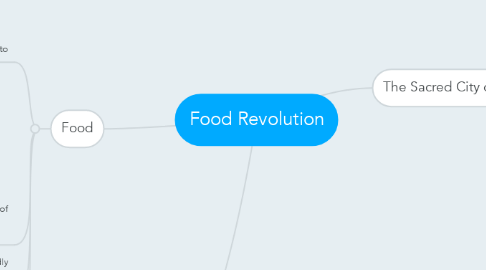
1. The Sacred City of the Incas
1.1. Why would Incas build a city and line the mountain with terraces even though there was very little soil there?
1.1.1. The builders used the best techniques known to them to make terraces that would last for eternity.
1.1.2. They built hundreds of terraces
1.1.3. What made the Incas decide to build their city there? Was it to guard the river? What was there to guard?
1.1.3.1. The chapter mentions it could be a place for trading coca. But why would they need a monumental city for that? Why had they built the city up so far from the water of the river?
1.2. Plantation
1.2.1. On of the characters in the chapter was looking at the vegetation and naming everything growing along the path. As they descended the mountain, passing one terrace after another, they began to notice that the plants changed.
1.2.2. Potatoes are very important to them. It talks a lot about potatoes
1.3. "Machu Picchu suddenly became an agricultural station. In that sense it was a sacred spot, because agriculture was a sacred activity for the Incas, who worshipped the life-giving Pachamama, the earth mother, and Inti, the sun, who together made the plants grow." (61)
1.4. Incas produced potatoes, oca, anu, achira, papa liza, luki, and maca.
1.5. Incas capital is Cuzco
2. Deaths
2.1. "As the spanish armies, clergy, and diseases swept through the river valley, whole villages died or were taken away to work the mines of Potosi."
2.2. The Urubamba River now has only a fraction of its former population.
3. Food
3.1. Potato
3.1.1. The potato spread throughout the world just as the silver of Potosi spread to Europe and then on to the ottoman Empire, Timbuktu, and China to cause a major change in the worlds economy.
3.1.1.1. Without the potato,, the Soviet Union might never have become a world power
3.1.1.1.1. Without the potato, Germany would not have fought two world wars
3.1.2. "It is difficult to imagine what Ireland would be today without the potato. What would the Russians, the Germans, the Poles, and the Scandinavians eat?
3.1.3. Other foods were difficult to grow and to keep. (Grain crops like wheat, rye, barley, oats, rice, millet, and sorghum)
3.1.3.1. All of these plants grow on high stalks above the ground so they are easy prey to the destructive elements of wind, hail, heavy rain and snow.
3.1.3.1.1. A problem also could have been animals eating the food. (Birds, insects, and other animals).
3.1.4. For its first two centuries in Europe, the potato was little more than curiosity grown in herbal gardens around monasteries and universities
3.1.4.1. Rulers forced them to plant it
3.1.5. Only needed three to four months to grow compared to almost double for grains
3.2. Everyone needed a consistent supply of nutritious and cheap food to sustain them
3.3. The building of the communal oven markedly reduced the bread and baked goods available
3.3.1. Each housewife only had one turn per week at the oven and she had to pay taxes for each tray she baked
